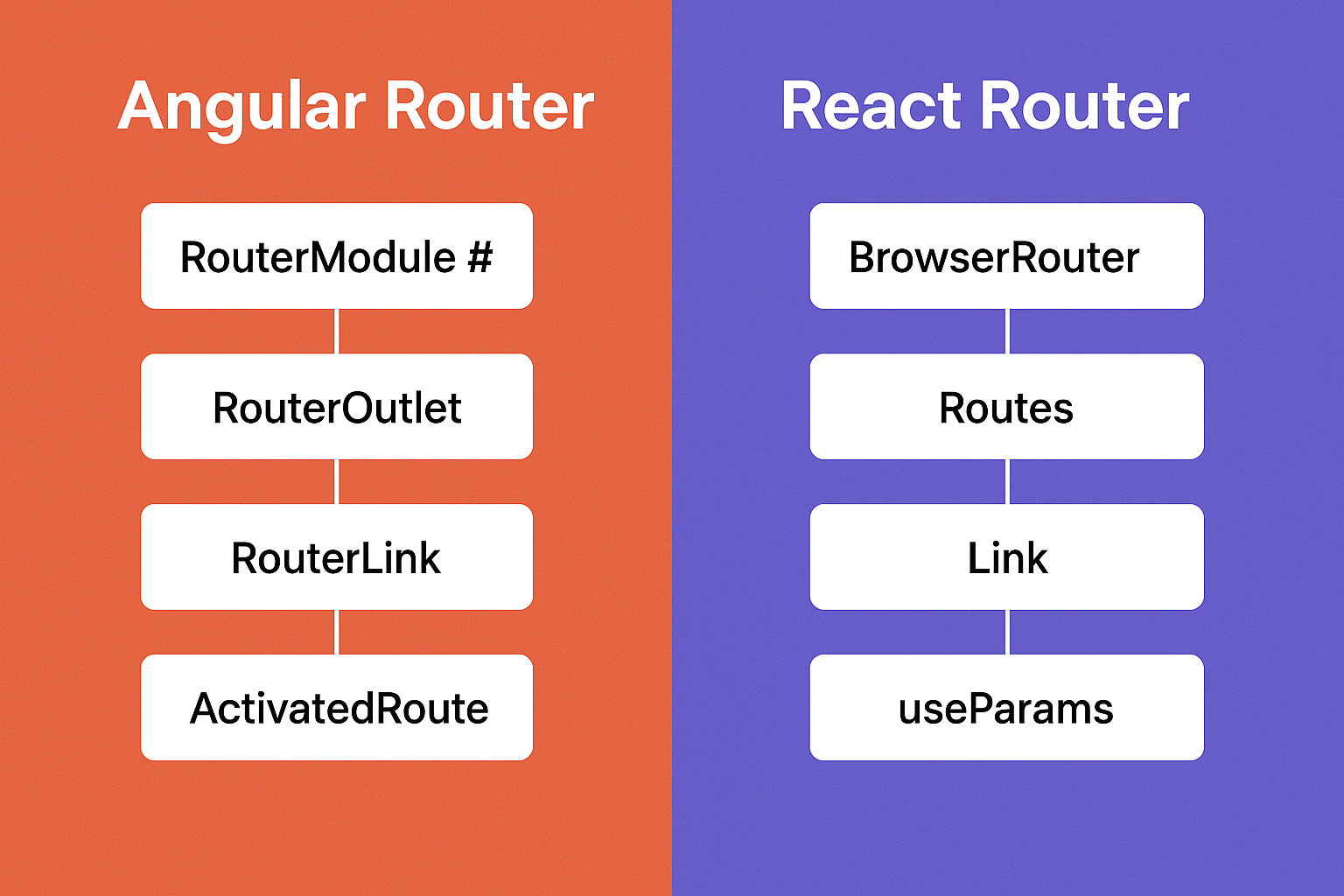React Router and Navigation
October 3rd, 2025
Intro
Welcome to Part 5 of the React & Gatsby Learning Series! In this series, I’m helping Angular developers (and front-end devs in general) understand React and Gatsby step by step. Each post builds on the last, includes a practical project, and highlights key comparisons between Angular and React (and later, Scully and Gatsby).
If you missed earlier posts, here’s a quick recap:
- Part 1 - From Angular to React—Understanding the Mental Model Shift
- Part 2 - React Fundamentals: Components, Props, and Your First App
- Part 3 - Mastering React State with useState and useEffect
- Part 4 - React Context and Advanced State Patterns
Now, it’s time to learn how to navigate between pages and build multi-page React applications.
Why Routing Matters
React by itself doesn’t include routing. Unlike Angular, which comes with the Angular Router built in, React is just a UI library. To handle routing, we typically rely on React Router, a widely used and feature-rich library that allows you to define and navigate between different views in a React app.
Think of React Router as React’s answer to Angular’s RouterModule. It provides:
URL-based navigation
Route parameters
Programmatic navigation
Protected routes and guards
Installing React Router
If you’re following along locally with Vite, install React Router:
npm install react-router-dom
Basic Setup
To use React Router, wrap your app in a BrowserRouter and define your routes inside it.
Example:
import { BrowserRouter as Router, Routes, Route, Link } from "react-router-dom";
import Home from "./Home";
import About from "./About";
function App() {
return (
<Router>
<nav>
<Link to="/">Home</Link> | <Link to="/about">About</Link>
</nav>
<Routes>
<Route path="/" element={<Home />} />
<Route path="/about" element={<About />} />
</Routes>
</Router>
);
}
export default App;
BrowserRoutermanages navigation history.Routescontains multipleRoutedefinitions.Linkis used instead of<a>to enable client-side navigation without a full page reload.
Dynamic Routing
You can create routes that accept parameters, just like Angular route params.
import { useParams } from "react-router-dom";
function Profile() {
const { username } = useParams();
return <h2>Profile page for {username}</h2>;
}
// Usage in routes
<Route path="/profile/:username" element={<Profile />} />;
Now /profile/chris will render “Profile page for chris.”
Protected Routes
Sometimes you only want users with certain conditions (like being logged in) to access a route. You can implement protected routes with conditional logic.
function PrivateRoute({ children, isAuthenticated }) {
return isAuthenticated ? children : <h2>Access Denied</h2>;
}
// Usage
<Route
path="/dashboard"
element={
<PrivateRoute isAuthenticated={true}>
<Dashboard />
</PrivateRoute>
}
/>;
Programmatic Navigation
React Router also lets you navigate in code using the useNavigate hook.
import { useNavigate } from "react-router-dom";
function Login() {
const navigate = useNavigate();
const handleLogin = () => {
// pretend login is successful
navigate("/dashboard");
};
return <button onClick={handleLogin}>Login</button>;
}
This is equivalent to Angular’s router.navigate().
Here is a quick visual comparison of Angular vs React routes:

Hands-On Project: Multi-Page Todo App
Let’s expand our Todo app by splitting it into multiple routes:
/→ Home page with welcome message/todos→ The Todo list component/about→ About page
This structure will help your app feel like a real, multi-page experience while still using client-side rendering.
Closing
✅ That wraps up Part 5: React Routing and Navigation of the React & Gatsby Learning Series!
Key takeaways from this post:
React does not include routing by default — React Router is the go-to solution.
BrowserRouter,Routes, andRoutedefine navigation.Dynamic routes allow parameters like
/profile/:username.Protected routes and programmatic navigation give you control over access and flow.
You expanded your Todo app into a multi-page application.
In the next part, we’ll dive into Performance Optimization in React, where we’ll learn how to speed up apps with memoization, lazy loading, and profiling.
👉 If you found this helpful, follow the series, share with fellow Angular devs, and keep building your multi-page React app!
